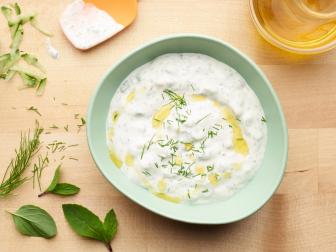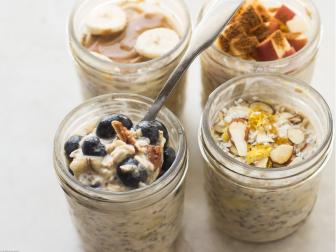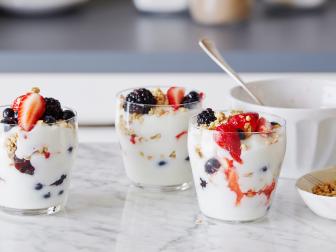The FDA Just Approved a Major Health Claim for Yogurt
It often takes years, and evaluation of several scientific studies, to get claims officially approved. Now, yogurt makers can say that the food may lower the risk of type 2 diabetes.

d3sign/Getty Images
The Food and Drug Administration (FDA) is responsible for managing and policing claims companies can make about food products. This includes language and allowable criteria for claims about health benefits based on scientific evidence. For example, a company cannot claim that a food may help reduce the risk of osteoporosis unless it meets established criteria for calcium content. There is a lot of time, effort and consideration that goes into these claims and the process can take years; even words like “healthy” and “natural” are evaluated. Food manufacturers often play a role in the development of these claims based on their reviews of scientific evidence.
With that, the FDA recently announced a qualified health claim about yogurt, and its potential to reduce the risk of type 2 diabetes. Given the time and evidence required to get such a claim approved, the development is monumental. Here’s what you need to know.
What Is a Qualified Health Claim?
There are various types and categories of claims depending on food and health conditions. Qualified Health Claims (QHC) are supported by scientific evidence but do not meet the standards required for a Significant Scientific Agreement (SSA), which includes more substantiated evidence that a relationship between a food and disease exist. QHCs are also accompanied by disclaimers or other qualifying language to help consumers best understand the claims.
Let’s Talk Yogurt
In a recent petition made by Danone North America, a QHC was filed to support the link between yogurt and type 2 diabetes. Amanda Blechman, Registered Dietitian and Director of Health and Scientific Affairs at Danone North America, explains this extensive process. “To file a petition for the claim, we thoroughly reviewed the body of existing research related to yogurt and type 2 diabetes, and submitted a total of 32 studies, which included data from more than 300,000 individuals, to the FDA for review along with the qualified health claim that we were proposing to summarize the evidence for consumers.” The FDA then set forth the following language for this claim as “eating yogurt regularly, at least 2 cups (3 servings) per week, may reduce the risk of type 2 diabetes according to limited scientific evidence.”
There is a lot of variation in nutrient profiles of yogurt when it comes protein and added sugar content, but no matter what style you prefer there are beneficial nutrients such as live, active cultures that act as probiotics that work along with the lactose in yogurt that may be playing a role in the reduced risk of type 2 diabetes. Blechman agrees there is flexibility in the type of yogurts that can be considered beneficial, but the claim is specific to dairy-based yogurts. “We at Danone recognize the important role that both dairy products and plant-based alternatives can play,” adds Blechman. However, “research that informed this claim was focused on yogurt made from dairy milk, so the new claim will not apply to plant-based yogurt alternatives.”

Eva-Katalin/Getty Images
How Can You Get More Servings of Yogurt Each Week?
If getting more servings of yogurt is now on your to-do list, take advantage of the variety and versatility by adding yogurt to both sweet and savory dishes. And no matter which yogurt varieties you choose, you can benefit from the bone-building calcium it contains.
“One of the many things I love about yogurt is that it’s accessible, it’s versatile and it fits within a wide variety of eating patterns and occasions,” adds Blechman. “Yogurt is a staple in my family’s grocery cart, and we like to enjoy it with fruit, mix it into smoothies, dips, and dressings, and even use it as a cooking or baking ingredient – there are so many easy ways to integrate more yogurt into your daily diet! For many, it is a nutrient-dense addition to a breakfast meal with fruit and whole grain cereal, a quick snack between meetings, or a sweet treat after a meal.”
Try These Yogurt Recipes
*This article was written and/or reviewed by an independent registered dietitian nutritionist.
Related Content:






































